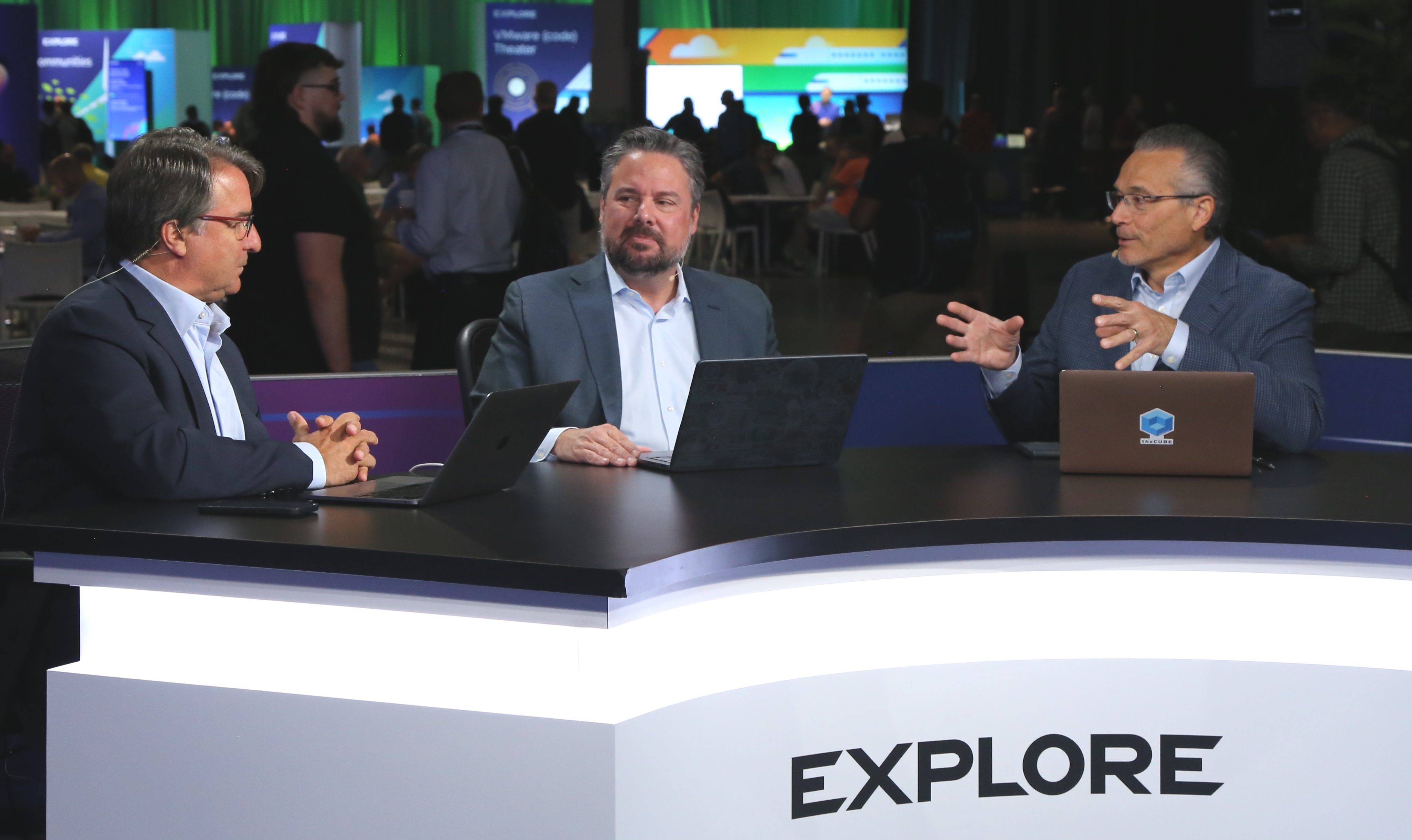 AI
AI
 AI
AI
 AI
AI
Enterprise technology is at a pivotal moment, as companies manage the rapid convergence of generative AI, cloud computing and evolving infrastructure demands.
This shift from traditional systems to cloud-based solutions is more than just a technological upgrade — it’s a fundamental transformation in how businesses operate and compete. As organizations embrace these advancements, companies are not only rethinking strategies for scalability and efficiency, but also redefining the very fabric of enterprise operations in a digitally driven world.

TheCUBE’s John Furrier, Rob Strechay and Dave Vellante discuss enterprise technology.
“While the market’s shifting to industry solutions and gen AI is changing the game, there’s a risk there that increases the risk factor,” said John Furrier (pictured, left), executive analyst at theCUBE Research. “There’s a huge amount of power dynamics in the market right now where cloud’s going at certain next generation … that means if the infrastructure isn’t performant, then you are going to have a serious problem.”
Furrier spoke with Dave Vellante (right), chief analyst at theCUBE Research, and Rob Strechay (center), principal analyst at theCUBE Research, at VMware Explore, during an exclusive broadcast on theCUBE, SiliconANGLE Media’s livestreaming studio. They discussed how enterprise technology is undergoing a significant transformation as companies adapt to the convergence of generative AI, cloud computing and evolving infrastructure, emphasizing the need for businesses to rethink strategies and maintain operational stability during this shift.
Traditional models of enterprise IT are being reevaluated as companies look to leverage new technologies and transition from legacy systems to more dynamic and scalable cloud-based environments. This shift is seen as necessary for staying competitive, especially as generative AI continues to influence how businesses approach problem-solving and operational efficiency.
“That’s because the old legacy stuff’s declining faster than the new stuff is growing,” Vellante said. “But IBM has excellent, with watsonx for data and governance and the whole rebirth of Watson, they have very good data chops, and I would partner with them. To me, that’s the strongest play.”
Instead of broad ecosystem engagement, there is now a concentrated effort to cater to the top-tier customers who are leading the charge in adopting these new technologies. This change signals a potential inflection point in the industry, where the old ways of operating are giving way to a more streamlined and efficient approach, according to Vellante.
“This is a completely different event. It’s really focused on the top customers,” he said. “It’s all about getting into the whole VCF stack … it’s a completely different vibe this year at the show.”
Another critical aspect is the challenges companies face when navigating this transition. The integration of cloud services, particularly in the context of VMware’s VCF stack, is seen as a double-edged sword. On one hand, it offers immense potential for growth and innovation. On the other, it presents significant challenges, particularly in maintaining the vibrant ecosystems that have traditionally supported enterprise IT, according to Strechay.
“I think everybody was focused on how you manage VMware,” he said. “I think now it becomes how do you manage VMware in a cloud sense and all of the different pieces that come. Maybe you are using the private AI stack, maybe you’re not. Maybe you’re using some of the Microsoft OpenAI stuff instead on top of [Azure VMware Solution], and I think that becomes the opportunity for the channel.”
The future of enterprise technology will likely involve even deeper integration of AI and cloud services. However, this transition is not without its risks. Companies such as VMware are at a crossroads, needing to adapt quickly to maintain market position. Partnerships and strategic alliances, particularly in areas such as data management and AI, could be crucial for staying competitive in this rapidly evolving landscape.
“I think VCF’s opportunity is to say, ‘Hey, we are the private cloud operations to complement your public cloud architecture and set up your Edge configuration, which is coming next immediately,’” Furrier said. “While not foreclosing the opportunities with AI, because of the license dynamic, I would focus on cost of ownership. I would definitely say we can show you specifically it’s cost reductions and total cost of ownership to show the value.”
Here’s the complete video interview, part of SiliconANGLE’s and theCUBE Research’s coverage of VMware Explore:
THANK YOU